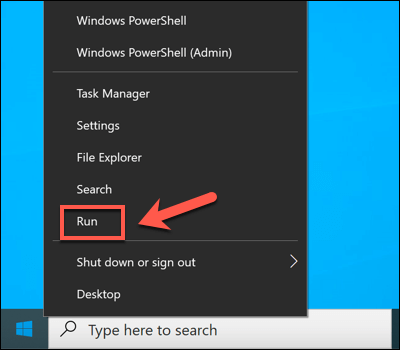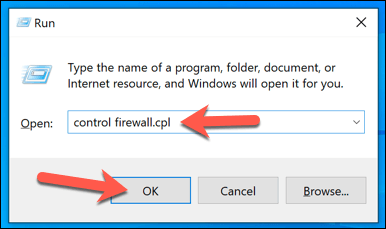Slack is a great collaborative platform for teams and coworkers, allowing you to send text messages, share files, and start voice calls. One underrated feature of Slack, however, is the ability to share your screen with others. Screen sharing is useful for presentation and meetings, but you may need to configure your device first.
You can share your screen on Slack using the web client or the desktop app, but you’ll need to upgrade to a paid Slack plan first. If you’re looking to set up and use Slack screen sharing, here’s what you’ll need to do.
How to Set Up Slack Screen Sharing
Before you begin to use screen sharing on Slack, you’ll need to be aware of a few things first.
Unfortunately, certain features (such as voice calling and screen sharing) are only available on Slack if your workspace is on a paid plan. If you’re the workspace owner or administrator, you’ll need to upgrade to a Standard, Plus, or Enterprise plan with a per-user or individually quoted cost before you (or your users) can screen share.
You don’t need a working camera for screen sharing to work, but as screen sharing is a component of a voice or video call, it could help you to present to your audience. At the very least, you’ll need a working microphone to set up a voice call and communicate with the other participants.
To use all of the screen sharing features on Slack (such as on-screen drawing), you may need to install the desktop app. While you can participate in a Slack screen sharing call in your browser, only the desktop app for Mac or Windows offer the full set of features for users.
How to Share Your Screen in Slack
To share your screen in a Slack workspace, you’ll need to initiate a new video call.
- To do this, open the Slack app or open your Slack workspace in your browser. In a direct message, select the Call button in the right-hand panel to begin a call.
- You can also start a new call in a channel by clicking on a username, then selecting the Call button in the pop-up. Confirm you want to start a call by selecting the Start Call button.
- Once you’ve established a new call, select the Screen Your Share button from the options at the bottom. If you have more than one monitor connected to your PC, you’ll need to select which one to share from the options provided. This will allow you to share specific apps in one screen, leaving the other screen private.
Once Slack screen sharing is active, a few rules apply. Only a single user can share their screen at any one point, and the user sharing their screen becomes the active user for the duration of the screen sharing, meaning no other camera feeds become prominent.
- To stop screen sharing, select the Stop screen sharing button. This will end screen sharing, returning the call to a standard video call.
Drawing on a Shared Slack Screen Share
Sharing your screen allows you to present on-screen information to other callers. If you want to make things more interactive, however, you (and other callers) can draw onto the shared screen directly. This allows you to annotate or point out certain items to your audience.
- Slack screen drawing is enabled by default. If you (or others) want to start drawing on-screen, select the Draw icon from the options provided.
- With the option enabled, draw on-screen using your mouse, trackpad, touchscreen, or other suitable interface device. If you want to stop other participants from joining in, select the Draw together icon. When the icon is white, other users can draw on your shared screen.
- You can also change the color of your pen during the on-screen drawing process. To do this, select the CTRL key (on Windows) or Command key (on Macs). This will cycle through each of the available colors.
Troubleshooting Slack Screen Sharing Issues
If Slack’s screen sharing tool isn’t working, you’ll need to troubleshoot the problem. There are a number of reasons why this feature might not work, from missing permissions to misconfigured network ports.
Enabling Permissions on Mac
Mac users, in particular, may find that macOS’ security settings preemptively block any attempt to share your screen. If this is the case, you’ll need to grant Slack access to record your screen in the System Preferences menu.
- To open System Preferences, select the Apple menu > System Preferences.
- In the System Preferences menu, select Security & Privacy > Privacy > Screen Recording. On the right, make sure that the Slack checkbox is enabled. If you can’t change this setting, select the lock icon at the bottom of the menu.
Opening Slack Network Ports
The Slack desktop app requires certain ports to be open for video calls and screen sharing to work properly. In particular, UDP port 22466 is needed for outgoing traffic. If this isn’t available, Slack will try to fall back onto TCP port 443, the default HTTPS port that should be available on most internet-connected networks.
Defaulting to port 443 may cause issues, however. If your Slack calls are low quality, or if you’re having trouble sharing your screen at a reasonable resolution, you’ll need to configure your firewall to open ports 22466 (UDP) and 443 (TCP). Windows users will also need to configure Windows Firewall to allow Slack access to the internet.
- To do this, right-click the Start menu and select the Run option.
- In the Run box, type control firewall.cpl and select OK.
- In the Windows Firewall menu, select the Allow an app or feature through Windows Defender Firewall. Make sure to select the checkbox next to the Slack app to enable access for Slack through the firewall. If you’re on a public or private network, make sure the checkbox in those categories are enabled, too. You may need to select the Change Settings button first.
Consider Alternatives
If Slack screen sharing still doesn’t work on your PC or Mac, you may need to look at alternatives. A number of screen sharing tools exist, including Facetime for Mac users and Zoom for cross-platform users.
You can also share your screen on mobile devices running Android using apps like Google Duo. Most major video conferencing apps support screen sharing, but if you’re having connectivity issues on Slack, you may need to troubleshoot these issues first, including switching to a better internet connection.
While Slack and other platforms may use different methods for establishing video and screen sharing calls, it will still require a stable and suitably configured network connection (including open ports) to allow the call to work properly.
Getting Started on Slack
If you’re a Slack workspace owner with an active paid plan, you’ll have full access to all the features that Slack has to offer. There are still plenty of features available for free Slack users, however. For instance, if you want to improve productivity on a free Slack workspace, you could think about adding a Slack bot to your channels.
These’ll help you to turn Slack into a second brain, allowing you to make use of calendar integration and note taking (along with other tricks and tips) to get the most out of the platform. If you’re looking for alternatives to Slack, you could give Microsoft Teams or Discord a try instead.
source https://www.online-tech-tips.com/computer-tips/how-to-set-up-and-use-slack-screen-sharing/














